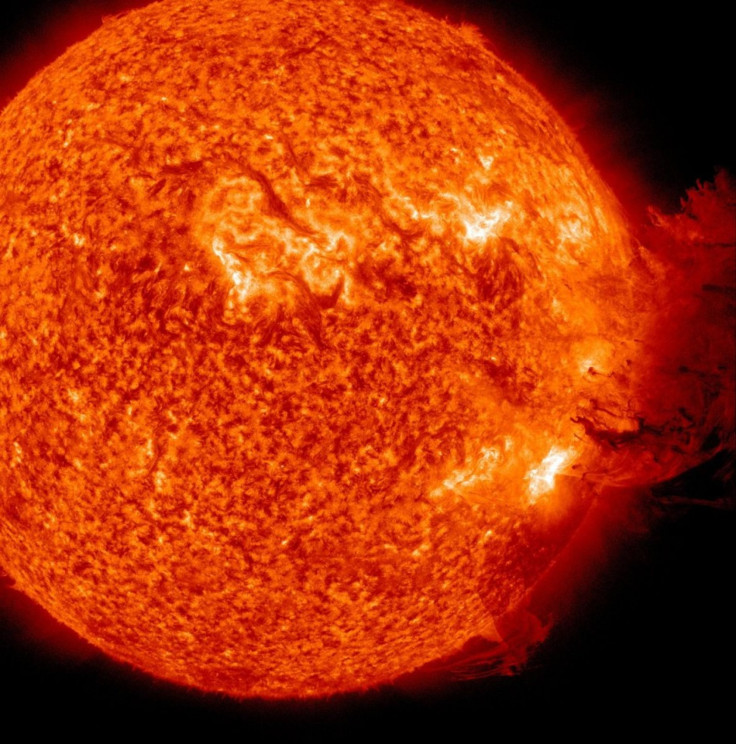Solar Storm Slams Into Earth, Auroras Visible

A series of solar flares that erupted on the Sun over the last three days have crossed the solar system and hit the Earth's magnetic field on Friday afternoon.
The flares, which are backed by a small radiation storm and a spectacular coronal mass ejection (CME), might stimulate aurorae on Friday night and could disrupt power grids and satellites.
Visible auroral activities are predicted for Friday in high latitude regions of the Northern Hemisphere, including the Arctic and parts of Canada, Russia, Alaska (USA) and northern Scandinavia. Reports of Northern Lights are coming in from many European countries including Germany, Denmark, Scotland and the Netherlands.
The National Weather Service (NWS) issued a warning for G3 (Strong) Geomagnetic Storm as G2 (Moderate) conditions has already surpassed.
The solar flares caused some radio blackouts Wednesday and Thursday, and caused some disruptions of high-frequency communications with airplanes flying over the Atlantic and Pacific oceans.
Three solar flares erupted on the sun beginning on Tuesday, and the most powerful electromagnetic shocks were being felt Friday by the ACE spacecraft. The ACE spacecraft measures radiation bursts several minutes before they hit the Earth. Real-time data from ACE is used by the Space Weather Prediction Center to improve forecasts and warnings of solar storms.
“It is too early to know what the effects of the blasts will be. If it is a really big storm, it still could be active Saturday night, but this kind of disturbance level won't be sustained for long,” said Joseph Kunches, a space weather scientist with NOAA's Space Weather Prediction Center.
A solar flare is caused when intense burst of radiation comes from the release of magnetic energy associated with sunspots. Flares are the solar system's largest explosive events. A CME happens when the outer solar magnetic fields are closed, often above sunspot groups, and the confined solar atmosphere can suddenly and violently release bubbles of gas and magnetic fields.
While a strong solar flare increases the chance of a spectacular light show, the electromagnetic pulse can also disrupt satellite communications, power grids and radio traffic when it passes the Earth. Some industries that are usually affected by solar flares include electrical power grid companies, airlines, GPS, military and ocean shipping routes.
The strongest solar storm on record is called the “Carrington Event,” which is named after Richard Carrington, who viewed and reported on the solar flare of Sept. 1. It occurred in late August and early September, 1859. From Aug. 28 through Sept. 4, aurorae of unusual brilliance were observed throughout the globe.
Tom Bogdan, director of NOAA’s space environment center, said over the next three to five years scientists anticipate a number of these blasts will become more frequent.
He said the next climax, called a solar maximum, was expected in 2013.
© Copyright IBTimes 2025. All rights reserved.



















